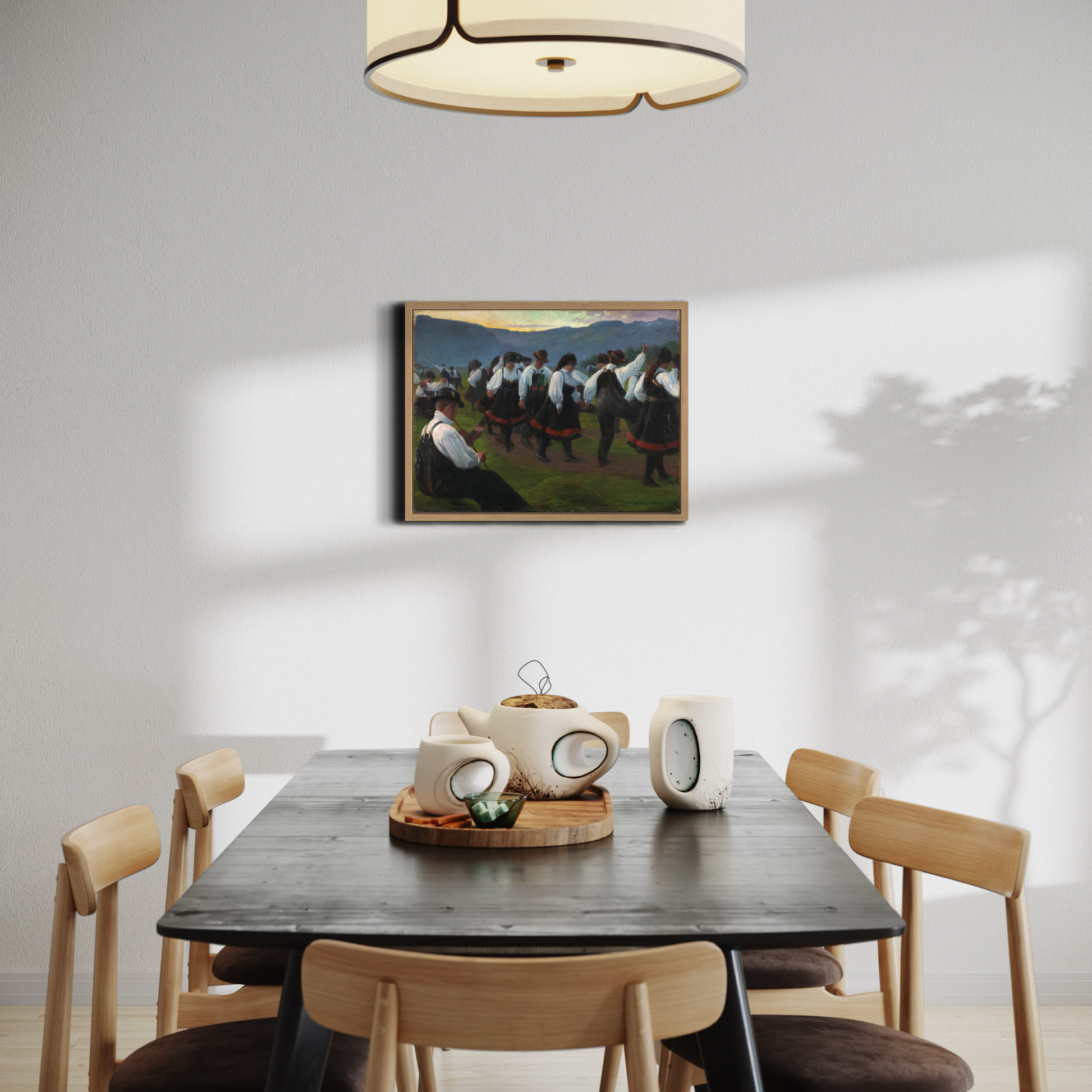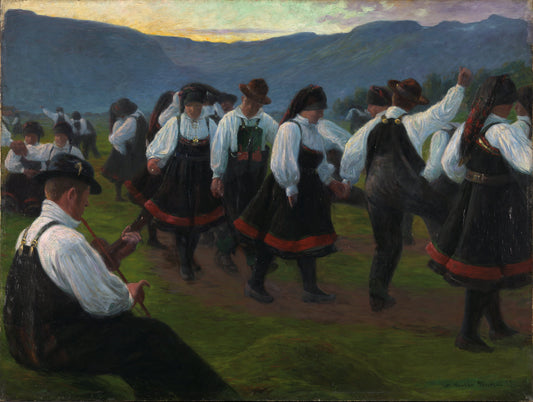Gustav Wentzel
Dance in Setesdal
Dance in Setesdal
Couldn't load pickup availability
High-quality reproductions from the National Museum's collection. Posters by DAIDDA are printed on Litho White Matt - 230 gram photo paper in premium quality. Artprints by DAIDDA are printed on Moab Entrada Natural 300 gram cotton art paper in premium quality. Produced by DAIDDA.
About the original:
Date: 1891
Other titles: Dance in Setesdal (ENG)
Designation: Painting
Material and technique: Oil on canvas
Technique: Oil
Material: Canvas
Dimensions: 144.5 x 191.8 cm
Subject: Visual arts
Classification: 532 - Visual arts
Motif type:
Genre:
Acquisition: Purchased from the artist in 1893
Inventory no.: NG.M.00430
Registration level: Single object
Owner and collection: The National Museum of Art, Architecture and Design, Visual Art Collections
Photo: Høstland, Børre
Shipping and returns
Shipping and returns
Shipping: We deliver to Scandinavia, the EU, the USA and several other countries. Please contact us if your country is not listed and we will try to arrange delivery.
Delivery time: 2-5 days within Norway, 7 days in Europe, 14 days globally.
Packaging: Our products are made to order and sent rolled in environmentally friendly packaging.
Customs Fees: International orders may be subject to customs fees, which are not included in shipping costs.
Return policy: You can return images within 14 days. See our returns page for more information.
Secure Payment: We never store your payment details. See our privacy policy for details.
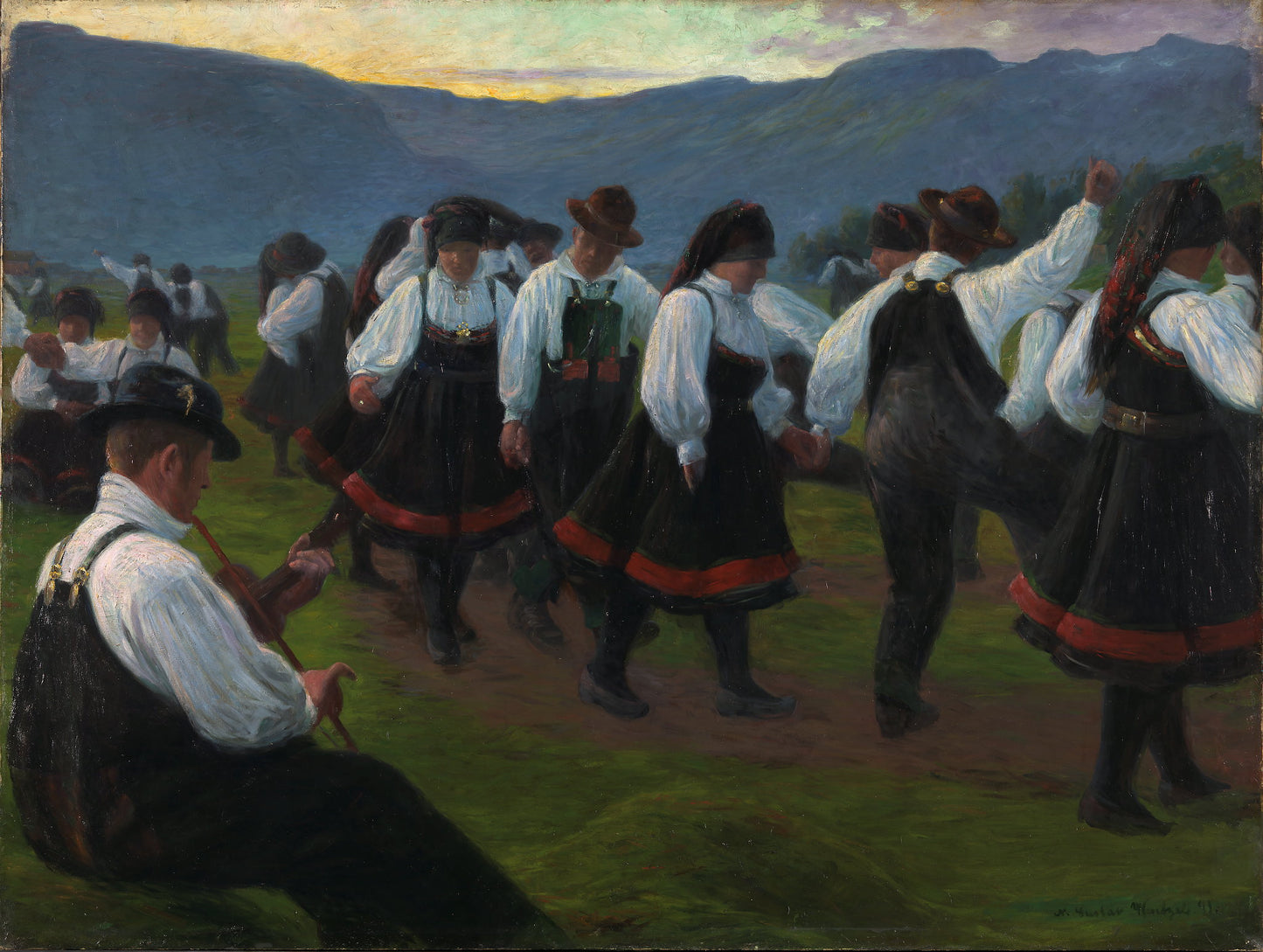
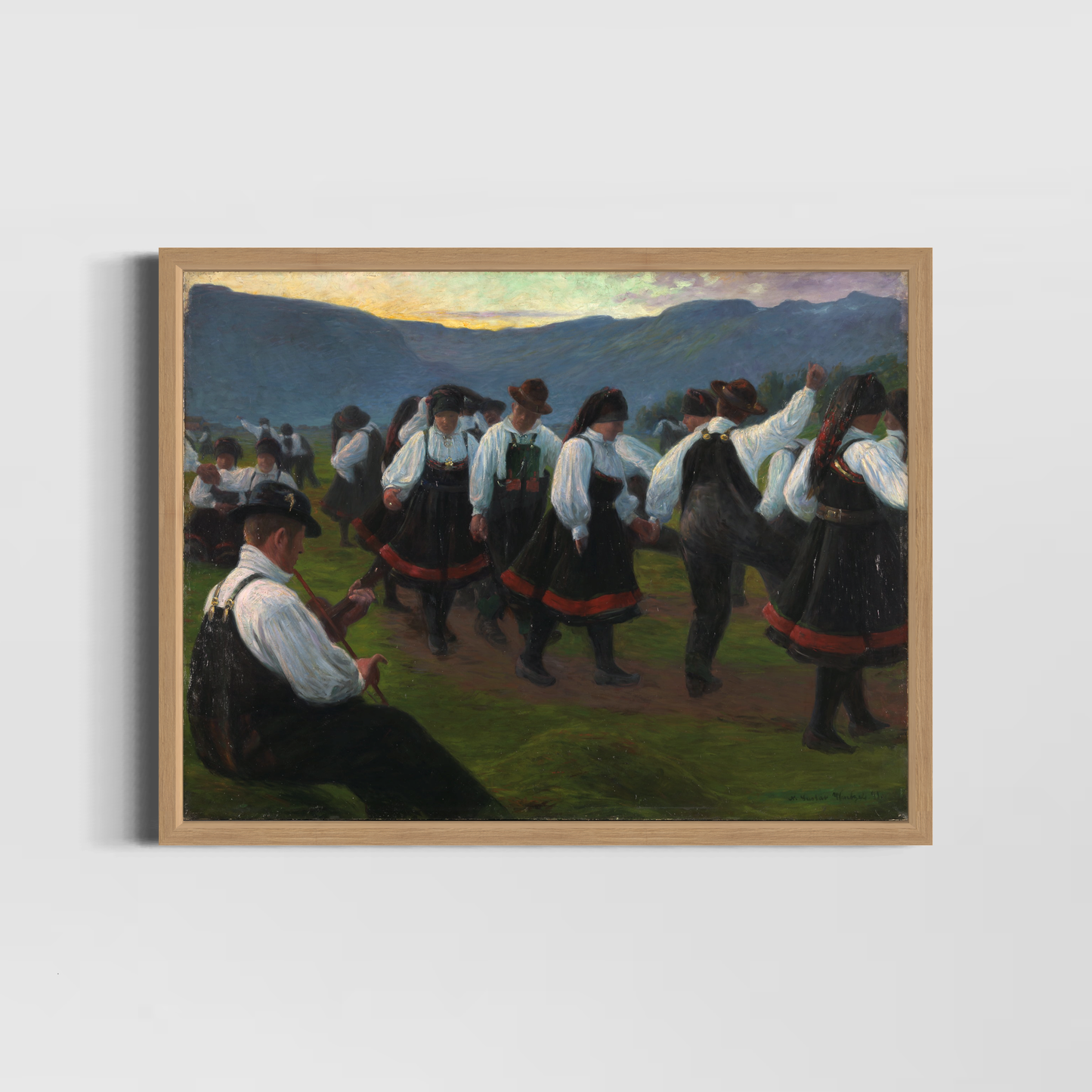
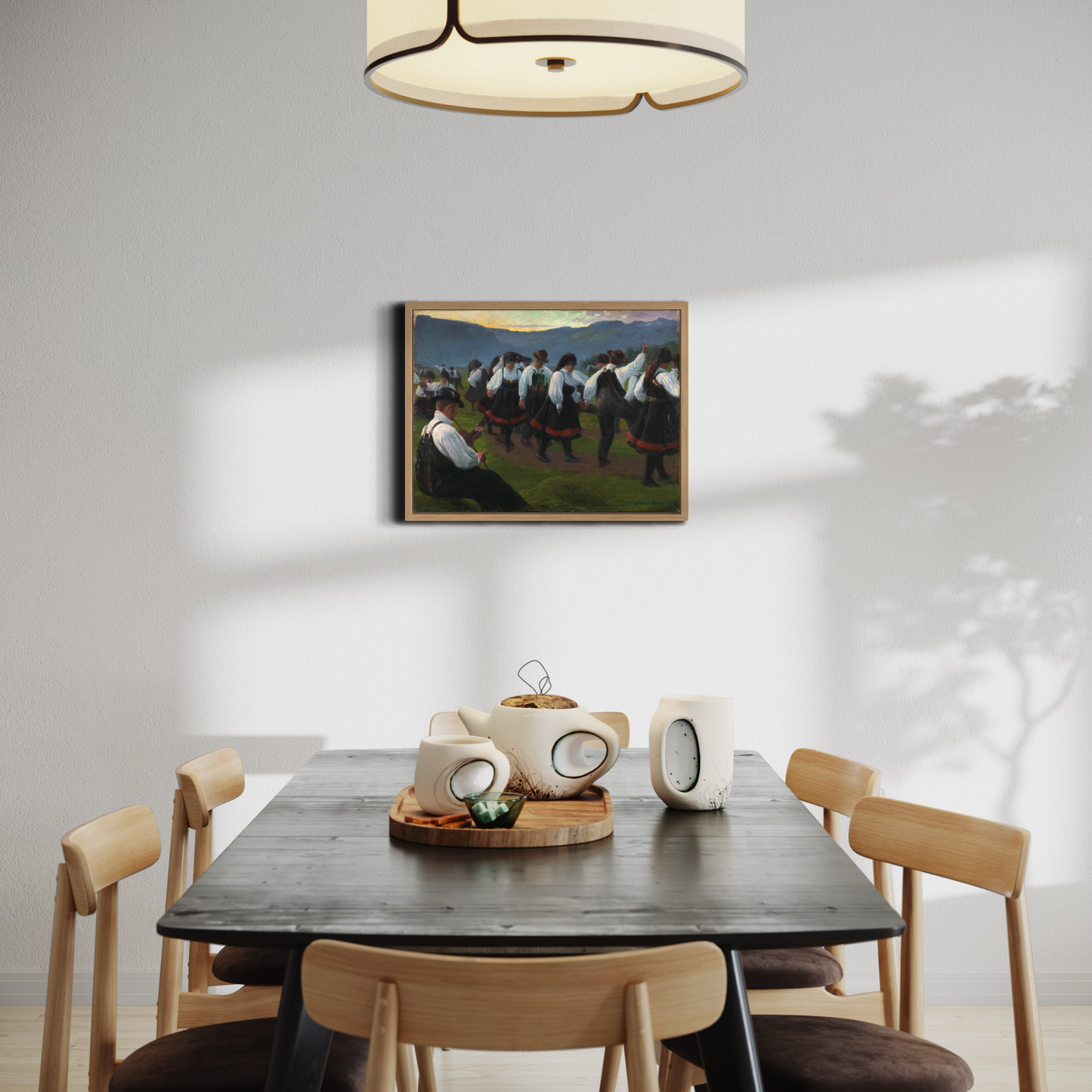
See all works
-
Dance in Setesdal
Vendor:Gustav WentzelRegular price From 150,00 NOKRegular priceUnit price per -
Chess players
Vendor:Gustav WentzelRegular price From 150,00 NOKRegular priceUnit price per -
Breakfast II, the artist's family
Vendor:Gustav WentzelRegular price From 150,00 NOKRegular priceUnit price per -
Breakfast I
Vendor:Gustav WentzelRegular price From 150,00 NOKRegular priceUnit price per

Gustav Wentzel
Gustav Wentzel was a naturalistic painter who was born in Vaterland, Christiania, and grew up in the neighboring suburb of Grønland. Although he was known to be technically proficient, his style was somewhat uneven. Wentzel became famous in art history for being the cause of the first "autumn exhibition". He was originally trained as a bricklayer, but decided to become a painter and attended Knud Bergslien's painting school and the royal school of drawing.
Wentzel was part of the young and radical bohemian movement, and his artwork was characterized by interiors from the petty bourgeoisie. He was influenced by modern French art, and his works took on a lighter tone and a more colorful glow. Wentzel traveled extensively throughout his career and was a pupil of the painter Bouguereau at the Académie Julian in Paris. He was also awarded a medal for Morning Mood, which was exhibited at the Académie Colarossi in Paris. Wentzel was financially challenged and was forced to leave the capital, but his art has made him one of the most famous artists of the decades around 1900.



